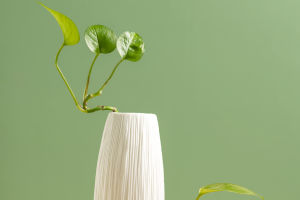Camellia is a genus of flowering plants that are native to Asia.
The most common species of Camellia is Camellia sinensis, which is used to make tea. However, there are over 100 species of Camellia that exist, and they come in a wide range of colors, shapes, and sizes. Camellias are prized for their beautiful flowers, which typically bloom in the fall and winter.
The Camellia plant is an evergreen shrub or small tree that can grow up to 20 feet tall. The leaves of the Camellia plant are dark green and glossy, and they have a leathery texture. The flowers of the Camellia plant are typically large and showy, with a wide range of colors and patterns. Some Camellias have single petals, while others have double or semi-double petals.
One of the most popular varieties of Camellia is the Camellia japonica. This species of Camellia has large, single, or double flowers that can range in color from pure white to deep red. Camellia japonica is often used as a decorative plant in gardens and parks, and it is also a popular plant for bonsai.
Another popular variety of Camellia is the Camellia sasanqua. This species of Camellia has smaller, more delicate flowers than Camellia japonica, but it blooms earlier in the season. Camellia sasanqua is often used as a hedge plant, and it is also a popular plant for bonsai.
Camellias are relatively easy to care for, but they do require some specific conditions in order to thrive. Camellias prefer acidic soil that is well-drained and rich in organic matter. They also prefer partial shade, as direct sunlight can scorch their leaves and flowers. Camellias require regular watering, but they are sensitive to over-watering and waterlogged soil.
In addition to being beautiful ornamental plants, Camellias have several practical uses. Camellia sinensis, the tea plant, is cultivated for its leaves, which are used to make tea. Camellia oil, which is extracted from the seeds of the Camellia plant, is used in a wide range of cosmetic and skincare products, as well as in cooking. Camellia oil is rich in antioxidants and is believed to have a range of health benefits.
Camellia sinensis, the tea plant, is native to China, but it is now cultivated in many parts of the world. There are several different types of tea that are made from Camellia sinensis leaves, including black tea, green tea, white tea, and oolong tea.
Each type of tea is produced through a different process of withering, rolling, oxidation, and drying. The flavor, aroma, and caffeine content of the tea depend on the specific type of tea and the way it is processed.
Camellias have a rich history and cultural significance in many parts of the world. In China, Camellias have been cultivated for thousands of years, and they are a symbol of longevity, faithfulness, and good luck. In the United States, Camellias are a popular ornamental plant, and they have been cultivated in the South for over a century.
Camellia is a beautiful and versatile plant that has been cultivated for thousands of years. With over 100 species and a wide range of colors and patterns, Camellias are a popular ornamental plant that is prized for its beautiful flowers.


